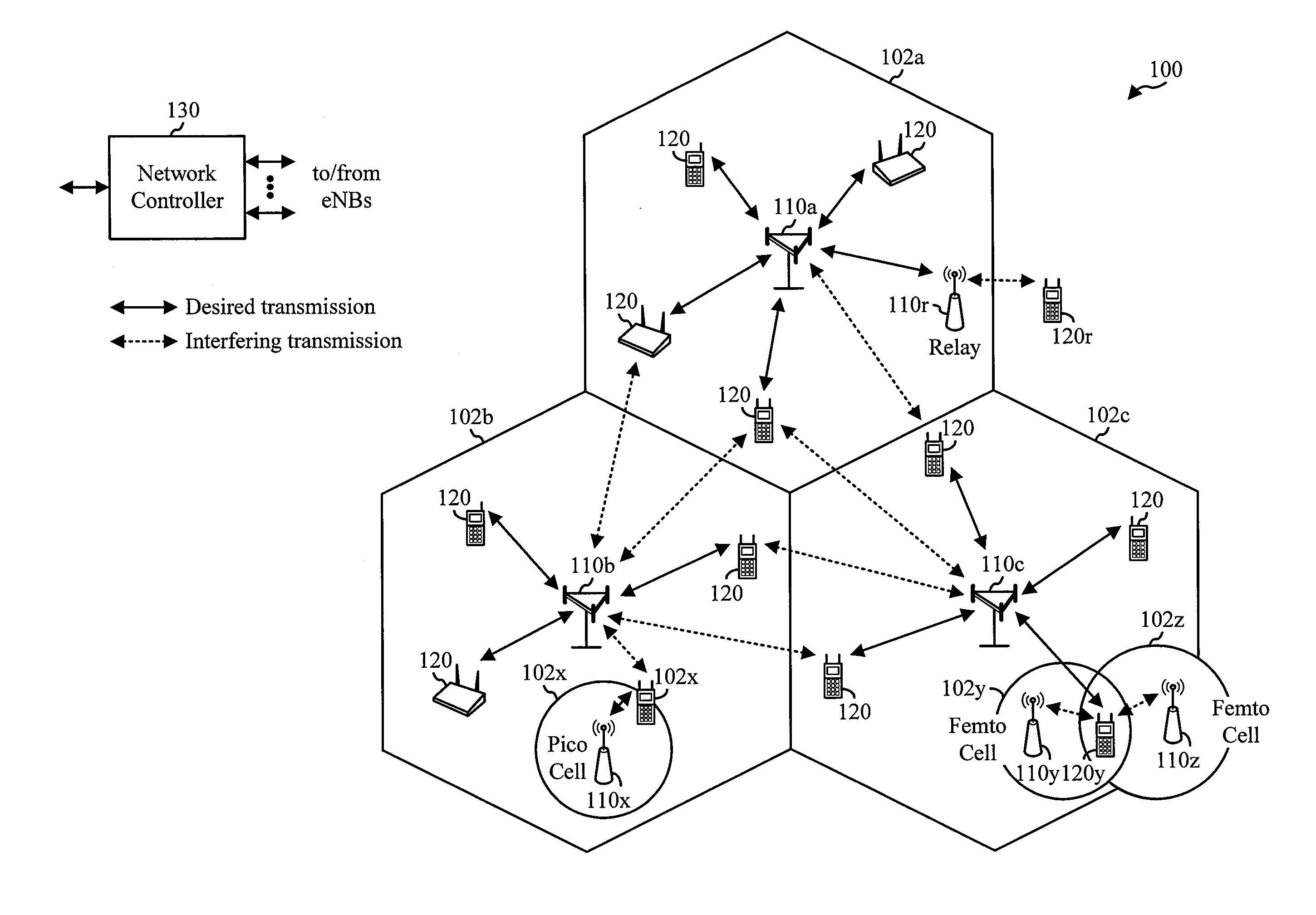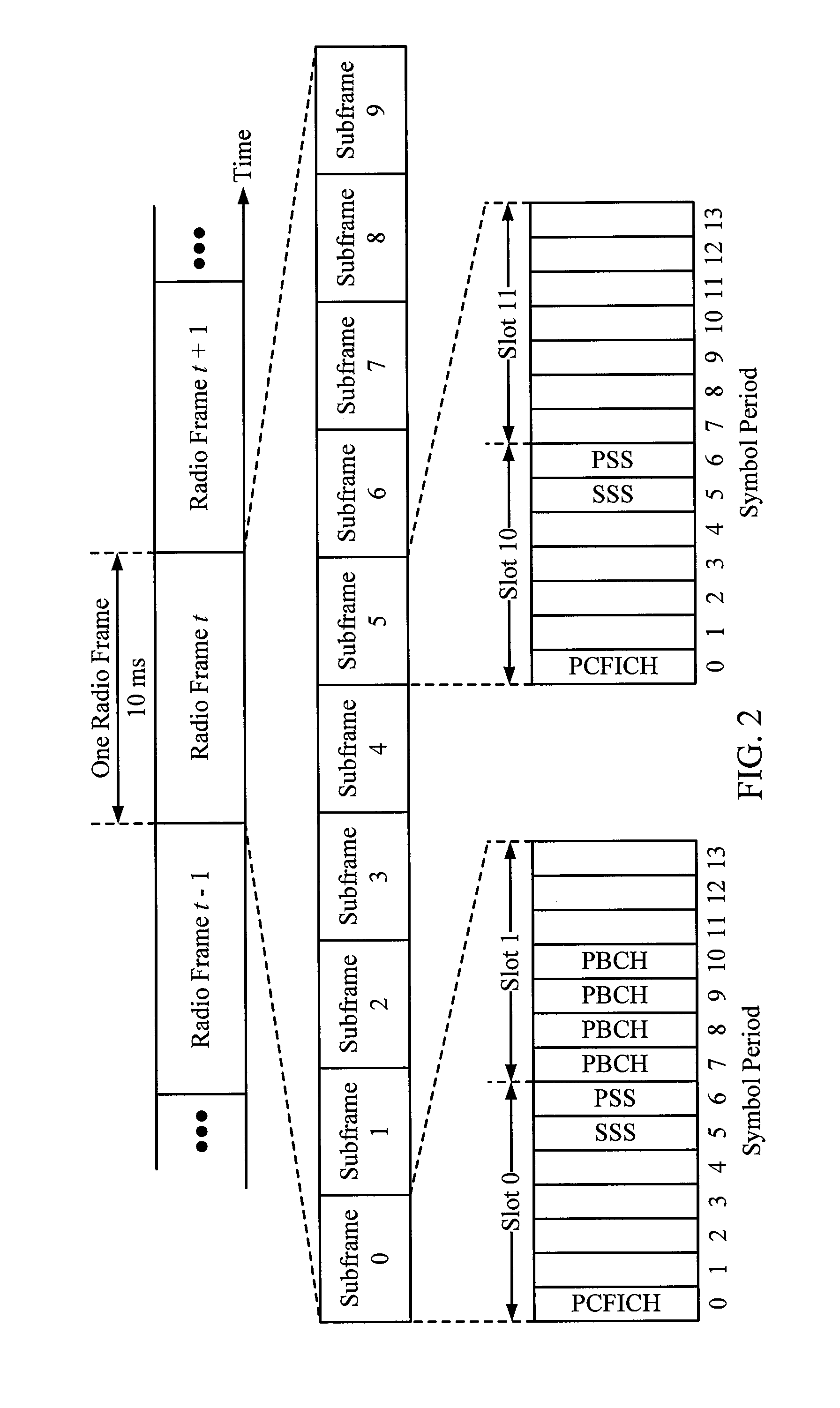Sample selection for secondary synchronization signal (SSS) detection
a secondary synchronization signal and sample selection technology, applied in the field of wireless communication, can solve problems such as interference to transmissions from other ues, degrade performance on both the downlink and uplink, and transmission from the base station may observe interferen
- Summary
- Abstract
- Description
- Claims
- Application Information
AI Technical Summary
Benefits of technology
Problems solved by technology
Method used
Image
Examples
example sample
Selection for SSS Detection
[0090]In LTE, cell identities range from 0 to 503. Synchronization signals are transmitted in the center 62 resource elements (REs) around the DC tone to help detect cells. The synchronization signals comprise two parts: a primary synchronization signal (PSS) and a secondary synchronization signal (SSS).
[0091]FIG. 7 illustrates an example PSS sequence 702 and alternating SSS sequences 7040, 7041 with a periodicity of 5 ms, in accordance with certain aspects of the present disclosure. The PSS allows a UE to obtain frame timing modulo 5 ms and part of the physical layer cell identifier (cell ID), and specifically cell id modulo 3. Three different PSS sequences exist with each sequence mapping to a disjoint group of 168 cell IDs. Based on Zadoff-Chu (ZC) sequences, the PSS sequence is chosen from one of 3 sequences based on a PSS Index=Cell ID modulo 3. The same sequence is transmitted every 5 ms as shown in FIG. 7.
[0092]The SSS is used by the UE to detect th...
PUM
 Login to View More
Login to View More Abstract
Description
Claims
Application Information
 Login to View More
Login to View More - R&D
- Intellectual Property
- Life Sciences
- Materials
- Tech Scout
- Unparalleled Data Quality
- Higher Quality Content
- 60% Fewer Hallucinations
Browse by: Latest US Patents, China's latest patents, Technical Efficacy Thesaurus, Application Domain, Technology Topic, Popular Technical Reports.
© 2025 PatSnap. All rights reserved.Legal|Privacy policy|Modern Slavery Act Transparency Statement|Sitemap|About US| Contact US: help@patsnap.com



